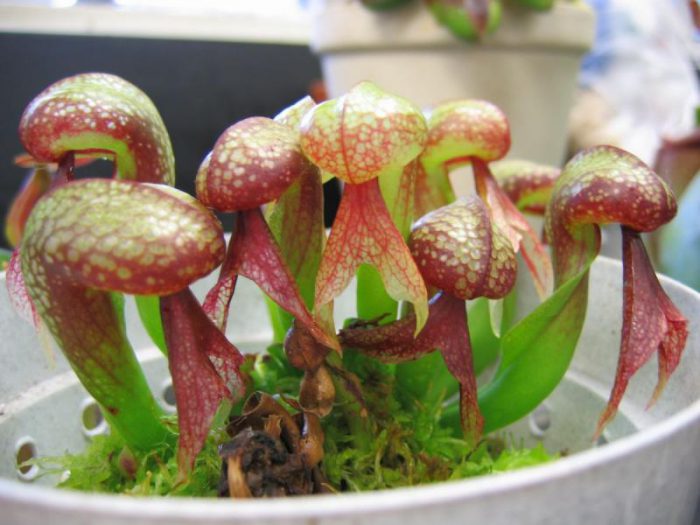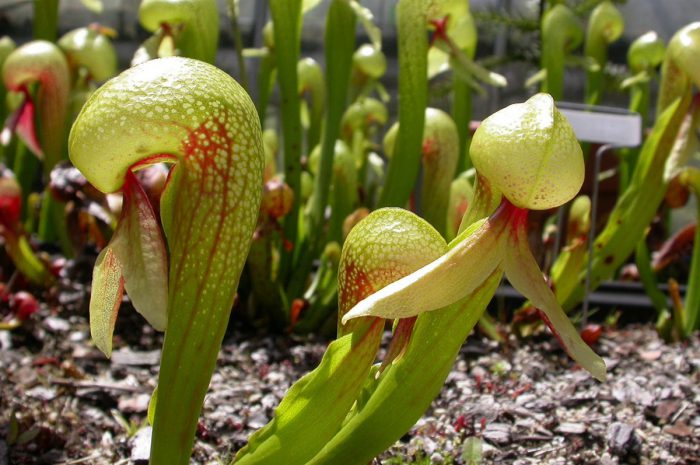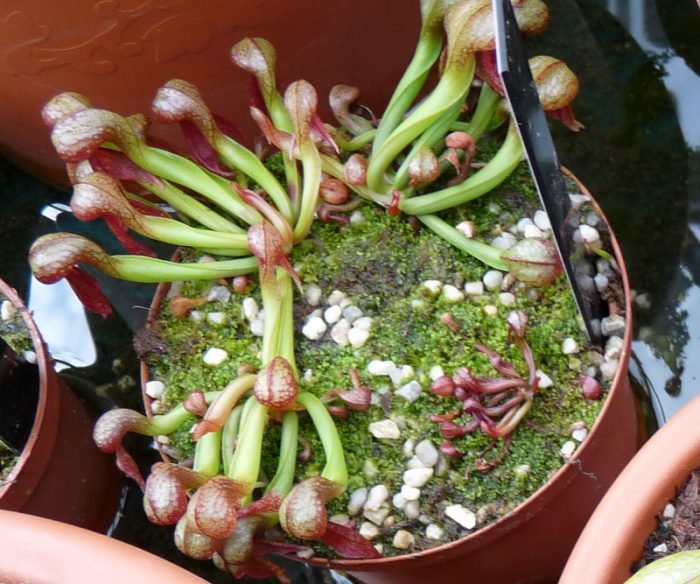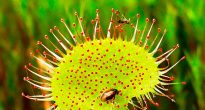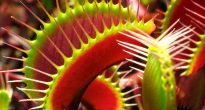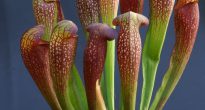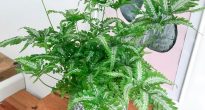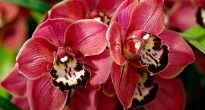Darlingtonia Is a perennial carnivorous plant. Under natural conditions, it can be found in Southern Oregon and Northern California, USA. It prefers to grow in mountainous areas in dammed meadows, on the banks of cold mountain rivers, as well as in forest shade. In order for the plant to feel great, it needs running cold water nearby.
Darlingtonia has been recognized by scientists as the most unique plant of its kind. In the Sarracene family, in the genus Darlingtonia there is only one representative, which is called Californian Darlingtonia. It is also often called "cobra", and all because the tubular leaves of the plant are very similar in shape to a cobra with a swollen hood. The small size greenish-red or yellow leafy appendages are similar to the forked tongue of a snake.
Tubular leaves can be up to 1 meter in height. At the top, they are swollen and shaped like a jug. Its walls are very slippery inside, and there is a small hole in the lower part. This jug is a kind of trap labyrinth for its victims, which are various insects. There are special spots on the surface of the entire leaflet, which are transparent windows. They contribute to the fact that an insect that has got inside cannot find a real way out. Flowering occurs in springtime. At this time, spectacular flowers from brownish-purple to yellow color appear on the Darlingtonia. They are located on single stems. An interesting fact is that even scientists do not know which insect pollinates the flowers of this carnivorous plant.
Content
Darlingtonia care at home
It is believed that growing this plant in an apartment is quite difficult. However, this is not quite true. The main thing is to remember that for Darlingtonia it is very important that its roots are always in a cold and moist substrate.
Location selection, illumination
Can be grown both indoors and in the garden (it is recommended to place it near a reservoir). Feels normal in bright, but diffused light, as well as in partial shade. Three different forms of this plant have been bred, which differ in color, namely: red, green and green-red. However, the leaves acquire a beautiful red tint only under intense sunlight. For a flower, it is recommended to choose a place in partial shade if the air in the room is too dry. When the room is very warm and high humidity, Darlingtonia can be placed in a sunny place.
Temperature
In the daytime, the plant needs to be provided with warmth, and at night it is better to rearrange it where it is relatively cool. In the summer, the plant grows well and develops at a temperature of 18–20 degrees, and with the onset of winter, it begins a dormant period and then it must be rearranged to a fairly cool place (from 10 to 18 degrees).
Earth mix
In order for Darlingtonia to feel its best, you need to provide it with natural growth conditions. So, you need a fairly wide flower pot. At its bottom, a layer consisting of expanded clay or perlite should be laid, its thickness should be equal to 3 to 5 centimeters. Then you need to put sphagnum moss (thickness 1 centimeter). After that, it is necessary to pour a soil mixture into the pot, consisting of sand (clean without limestone), peat and perlite, taken in equal parts. You can also mix 1 part white sand and 1 part peat. The topmost layer should be moss. Thus, the plant will be provided with coolness and moisture.
How to water
In the summer, watering should be abundant. To do this, you must use necessarily settled, cold and soft water. It is also recommended to spray the carnivorous flower as often as possible. If the room is too hot, then experienced flower growers advise to put a couple of ice cubes directly on the surface of the substrate, which will help to cool the soil. In winter, watering should be moderate, the plant cannot be sprayed during this period.
This plant, like other carnivores, must be sure to rest during the cold season. Its growth stops and it stays in this state for about 3-5 months. For this period, it is recommended to rearrange it in a cool place with a minimum amount of light. Before the onset of spring, the adult Darlingtonia blooms, and after several weeks, large young jug leaves grow in it.
It does not need to be fed or cut off.
Reproduction methods
Can be grown quite easily from seed. But this process is quite long and young plants will need to be provided with intense lighting and high humidity. Vegetative reproduction is more often used. If you plant a flower in a fairly wide pot, then it will give numerous underground shoots. Then they will need to be carefully separated and planted in a separate container, but only after they have their own roots.

